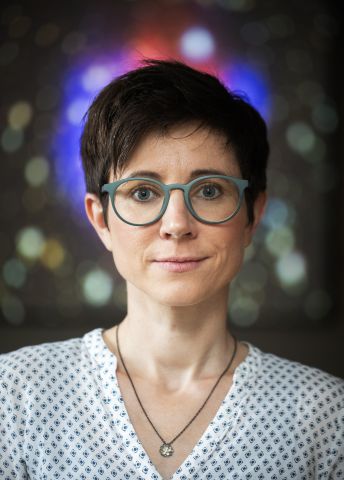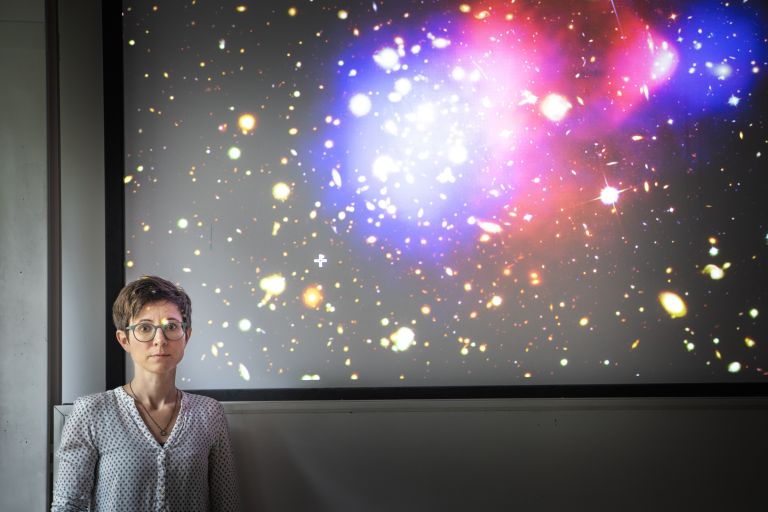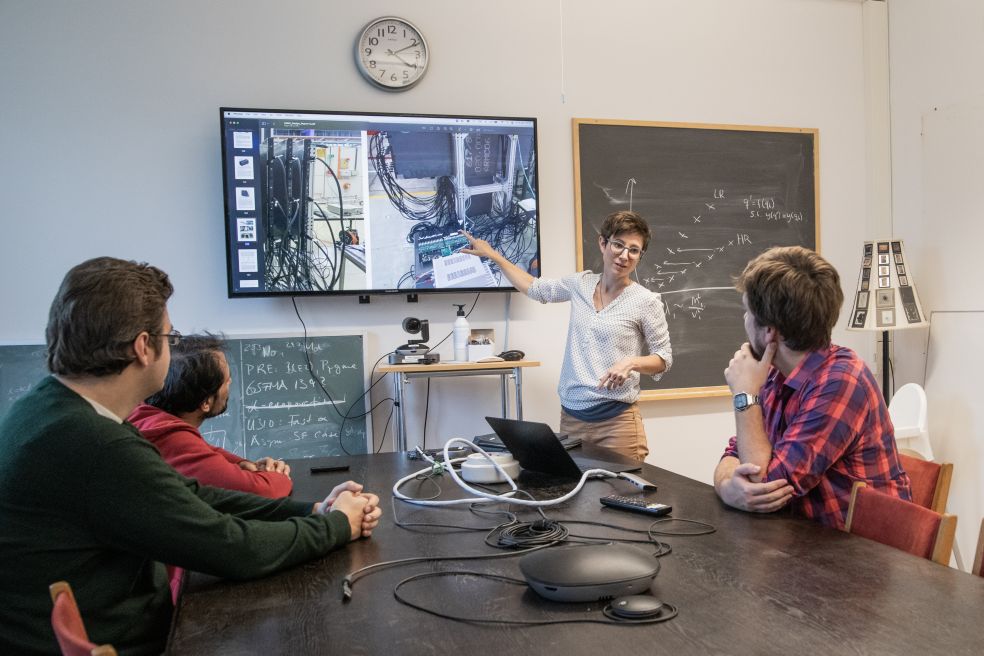
Ruth Pöttgen
PhD, Natural Sciences
Wallenberg Academy Fellow 2023
Institution:
Lund University
Research field:
Light dark matter


Wallenberg Academy Fellow 2023
Institution:
Lund University
Research field:
Light dark matter
Why are scientists so convinced that dark matter exists, when they cannot find it? Pöttgen, who is a particle physicist and Wallenberg Academy Fellow at Lund University, has the answer:
“It all comes down to gravity. Measurements in cosmology and astrophysics indicate far more gravity than there should be. There are two possible explanations: either we do not understand how gravity works, or there is more matter than we can see.”
There are some researchers who do in fact believe in the first possibility – that there is something wrong with the theory of gravity. But to replace the entire theory would require numerous explanations for many different observations. Dark matter, however, would explain many of them all at once.
All known matter is made up of particles that interact with each other. Scientists assume that dark matter is also made of particles, but ones that interact incredibly weakly with their surroundings and have an unknown mass. Calculations suggest that one possibility is that dark matter particles could be significantly heavier than a proton. Most experiments have so far been based around this idea, without finding dark matter. Another possibility remains: the particles weigh less than a proton – somewhere between the mass of an electron and a proton. Only in recent years have researchers begun to search in that range, which is what Pöttgen wants to do.
She and her colleagues are planning an experiment in which electrons will be fired at a very thin sheet of tungsten or another heavy material with many atomic nuclei. There is a chance that these collisions will in rare cases produce dark matter. If so, the electrons will emerge with lower energy and a new direction without anything else appearing to happen. No new particles can be seen. What should have happened in that case is that invisible particles have been created: dark matter.

But if the energy of the electrons is too low, other processes will occur that also affect the readings. If it is too high, the collisions may produce a type of ultra-light particles called neutrinos, which behave almost like dark matter and would “look” like dark particles in the experiment. But the SLAC accelerator at Stanford has an electron beam with the right energy. Pöttgen and her team will carry out the experiment there, together with international colleagues.
“This is the first time an experiment has been built that is so sensitive that we can be sufficiently sure we have not simply missed something. If “nothing” comes out even though the electron has been affected, then dark matter really must have been created.”
Precise measurements require a maximum of five or six electrons at a time, but an enormous number of shots are needed to collect enough data, since dark matter probably only forms very rarely. In total, the researchers want to measure around ten to the power of sixteen electrons. Without an accelerator capable of launching electron groups very densely, the experiment could take decades. The accelerator at SLAC can provide about 40 million electron bunches per second. Pöttgen expects to complete the experiment in less than ten years.
If we fire in an electron and it emerges with much less energy and a new direction, but nothing else happens… that can only happen if there are new, invisible particles.
“Even the first year may yield results more sensitive than anything currently available. If we really find something, it would be a major breakthrough, but if we don’t see anything, we will also have learned something. We’ll know more about what dark matter cannot be. My entire field – light dark matter – has emerged because of zero results in searches for heavy dark matter.”
The experiment is monitored around the clock. A remote control room is being set up in Sweden so that the Swedish team can take over the Californian night shifts. But ensuring her colleagues get some sleep is not the main reason Pöttgen is doing this. Rather, it is an attempt to reduce the climate footprint of this research field.

“Our experiments and calculations consume a lot of energy and normally we also travel a lot. I find that highly problematic and am committed to exploring how a more sustainable academic environment could work. The external control room means that my colleagues and I don’t need to travel to California multiple times to take our share of responsibility for the experiment.”
She also considered sustainability when designing the experiment. It would have been easier to take measurements by firing fewer electrons at a time, but then the experiment would have required much more accelerator time and thus more energy.
Pöttgen was already interested in particle physics when she attended middle school in Germany. She completed her PhD at CERN in Switzerland and obtained a postdoctoral position in Stockholm. She then saw an opening as an associate professor at Lund University for a researcher with a new focus on dark matter. It sounded perfect, but she thought she was too inexperienced. She was pleasantly surprised when she was awarded the position. She has now been in Lund for eight years.
“It’s so exciting to discover something new, and even if we don’t find anything, we will have learned something. In research you always have a plan, but sometimes things don’t go as expected. You have to find new solutions. Some people might find that frustrating, but I enjoy the challenge. I am very persistent and do not give up.”
Text Lisa Kirsebom
Translation Maxwell Arding
Photo Åsa Wallin